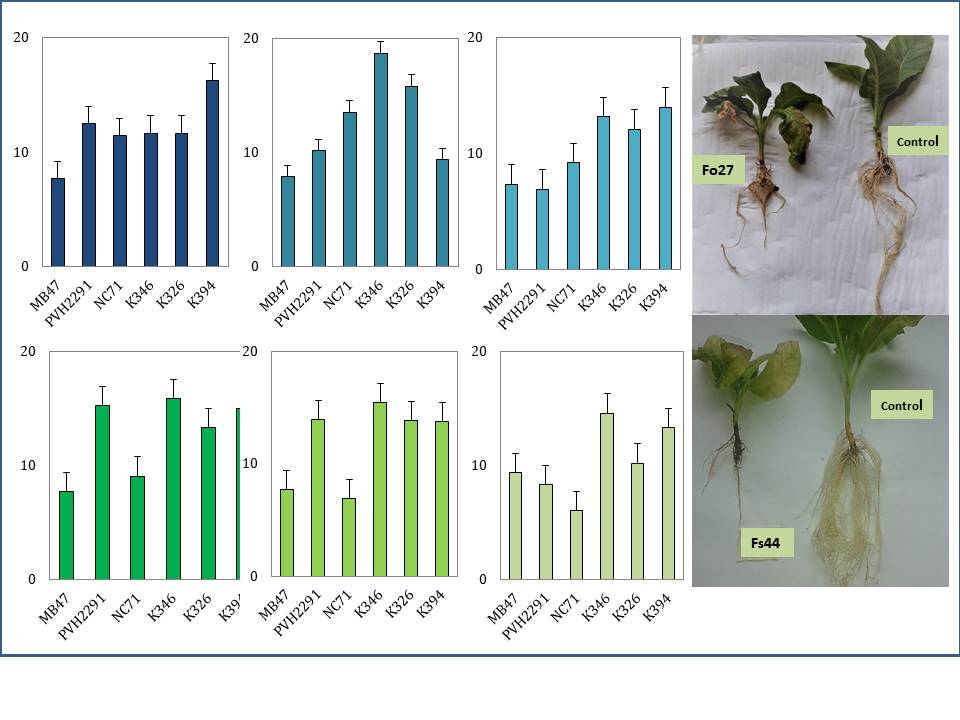Evaluation of tolerance to Fusarium oxysporum and Fusarium solani in Virginia-type tobacco (Nicotiana tabacum L.) varieties under controlled conditions in Northwestern Argentina
DOI:
https://doi.org/10.48162/rev.39.054Palabras clave:
tolerancia, Nicotiana tabacum L., FOSC, FSSC, enfermedades de hongos de suelo, patogenicidadResumen
The production of tobacco (Nicotiana tabacum L.) in Argentina is centered in the northwestern region (NWA), where the incidence of root rots and stem diseases caused by Fusarium spp. has increased considerably in recent years. This study aimed to evaluate the pathogenicity levels of isolates of the F. oxysporum and F. solani complexes in different varieties of Virginia Type tobacco. The commercial varieties MB47, PVH229, NC71, K346, K326, and K394 were inoculated with six isolates of both complexes. The variables evaluated were the incidence and severity of the symptoms. The area under the disease progress curves (AUDPC) was calculated and subjected to analysis of variance (ANOVA). Also, disease epidemiological models were fitted to the experimental data. The MB47 variety was significantly less infected and the varieties K346, K326, and K394 had the highest AUDPC means, showing susceptibility to the isolates. The disease intensity curves were adequately described by the monomolecular and logistic models. The results provide, for the first time, information about the levels of tolerance to vascular wilt and root rot under controlled conditions for the main varieties of Virginia-type tobacco grown in NWA.
Highlights:
- FOSC isolates produced mainly wilting, chlorosis, and growth reduction in tobacco plants; in contrast, FSSC isolates caused root rot, with characteristic necrotic lesions and root rot symptoms.
- The highest DSI scores were registered for Fo27 and Fo15, while the lowest DSI score was found for Fs98.
- The results obtained from the DSI scores were related to the mean AUDPC values of the isolates.
- MB47 and NC71 were significantly less infected than the other varieties, which registered low AUDPC values.
Descargas

Descargas
Publicado
Cómo citar
Número
Sección
Licencia
Derechos de autor 2021 Revista de la Facultad de Ciencias Agrarias UNCuyo

Esta obra está bajo una licencia internacional Creative Commons Reconocimiento-NoComercial-CompartirIgual 3.0.
Aquellos autores/as que tengan publicaciones con esta revista, aceptan las Políticas Editoriales.










.jpg)




